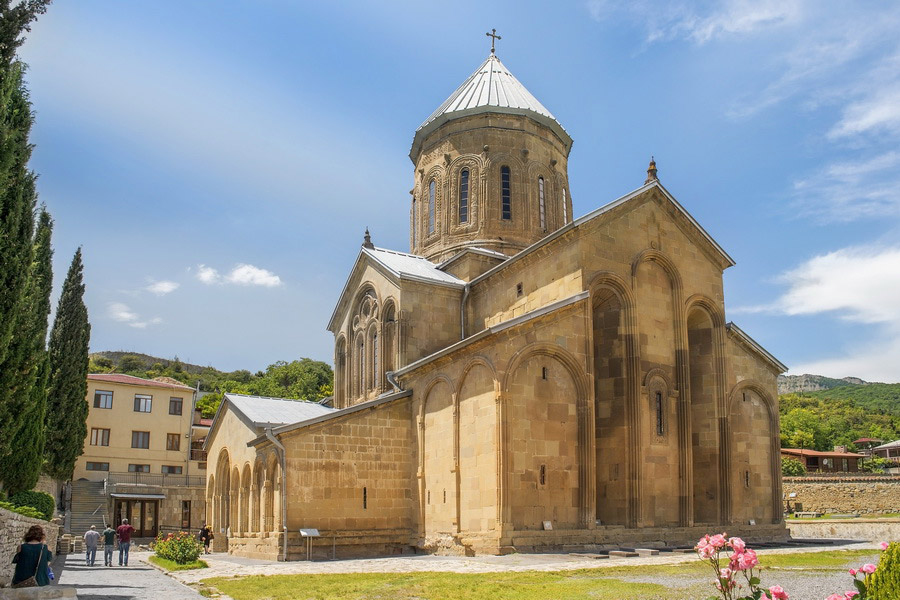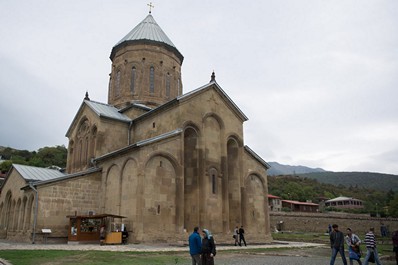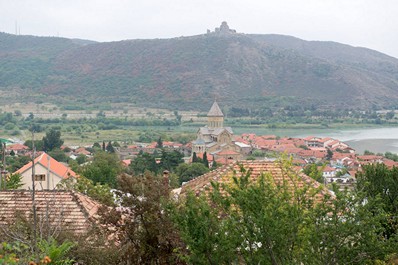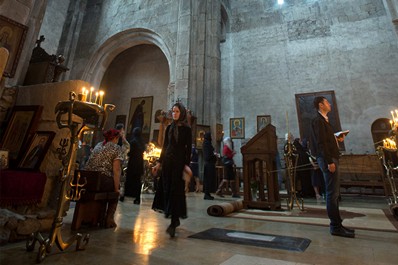
The Samtavro Monastery in Mtskheta, Georgia's ancient capital, has stood as a beacon of the Georgian people's devout faith for nearly 1700 years. Alongside the equally renowned Svetitskhoveli Cathedral, Samtavro is one of the central monasteries of the Georgian Orthodox Church. The monastery's principal shrine, the Samtavro Transfiguration Church, showcases the splendor of early medieval Orthodox architecture. Founded in the 4th century AD, at Christianity's nascent stage in Georgia, Samtavro is steeped in religious history. It is the final resting place of King Mirian III and Queen Nana, early Christian converts who played a crucial role in spreading the faith throughout Iberia.
Svetitskhoveli Cathedral, Georgia's inaugural sacred edifice, symbolized the nation's shift from paganism to Orthodoxy. King Mirian deemed himself and other commoners unworthy to enter this initial divine sanctuary on Georgian soil. Hence, the Samtavro Church was established to welcome all locals for worship, embodying inclusivity in the spiritual realm.
Legend holds that Samtavro was constructed where a blackberry bush thrived in the royal gardens, the very site where Saint Nino, the harbinger of Christianity to ancient Iberia, chose to dwell with the assistance of the king's gardener. This location, sanctified by the Mirian family, became known as the Upper Church due to its elevation above Svetitskhoveli.
Over centuries, Samtavro Monastery has witnessed destruction and restoration, adopting its current form in the 11th century under King George I. This era brought expansions, the addition of a southern gate, and the embellishment of the church with unparalleled ornamental designs.
Today, the Samtavro Monastery complex encompasses the main church, the small Church of St. Nino, a bell tower from the 15th to 17th centuries, and an 18th-century cylindrical tower. Its interior houses preserved late medieval frescoes and an iconostasis.
The monastery's relics draw pilgrims nationwide, notably a segment of the life-giving pillar, a revered artifact for Mtskheta's populace. This pillar, believed to be hewn from a vast oak, prefigures the site of the Svetitskhoveli Cathedral. Miraculous tales tell of the pillar exuding myrrh and healing the infirm upon touch. Additionally, Samtavro safeguards a stone from Saint Nino's grave in Bodbe, Kakheti, and the relics of Saints Shio of Mgvime and Gabriel of Samtavro, the latter's remains astonishingly incorruptible, now resting within the monastery's northwestern expanse.
Visitors often pair a trip to Samtavro with explorations of Svetitskhoveli Cathedral and Jvari Monastery, delving into Mtskheta's hallowed grounds. Guided tours are advised for a comprehensive understanding of these sites' profound significance to Georgian heritage.




